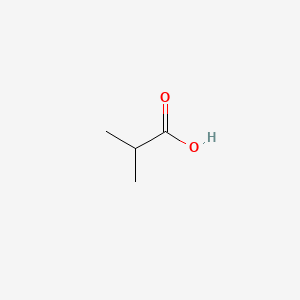| Rossouw D et al. |
Linking gene regulation and the exo-metabolome: a comparative transcriptomics approach to identify genes that impact on the production of volatile aroma compounds in yeast. |
2008 |
BMC Genomics |
pmid:18990252
|
| Rodrigues DF et al. |
Architecture of thermal adaptation in an Exiguobacterium sibiricum strain isolated from 3 million year old permafrost: a genome and transcriptome approach. |
2008 |
BMC Genomics |
pmid:19019206
|
| Aklujkar M et al. |
The genome sequence of Geobacter metallireducens: features of metabolism, physiology and regulation common and dissimilar to Geobacter sulfurreducens. |
2009 |
BMC Microbiol. |
pmid:19473543
|
| Rehman A et al. |
Effects of probiotics and antibiotics on the intestinal homeostasis in a computer controlled model of the large intestine. |
2012 |
BMC Microbiol. |
pmid:22452835
|
| Wen ZT et al. |
Biofilm formation and virulence expression by Streptococcus mutans are altered when grown in dual-species model. |
2010 |
BMC Microbiol. |
pmid:20398271
|
| Aidemark M et al. |
Trichoderma viride cellulase induces resistance to the antibiotic pore-forming peptide alamethicin associated with changes in the plasma membrane lipid composition of tobacco BY-2 cells. |
2010 |
BMC Plant Biol. |
pmid:21156059
|
| Green SR et al. |
Combination of sapacitabine and HDAC inhibitors stimulates cell death in AML and other tumour types. |
2010 |
Br. J. Cancer |
pmid:20924380
|
| Hansen CF et al. |
A high dietary concentration of inulin is necessary to reduce the incidence of swine dysentery in pigs experimentally challenged with Brachyspira hyodysenteriae. |
2011 |
Br. J. Nutr. |
pmid:21736788
|
| Pluske JR et al. |
Feeding different types of cooked white rice to piglets after weaning influences starch digestion, digesta and fermentation characteristics and the faecal shedding of beta-haemolytic Escherichia coli. |
2007 |
Br. J. Nutr. |
pmid:17298698
|
| Cross DE et al. |
Herbs, thyme essential oil and condensed tannin extracts as dietary supplements for broilers, and their effects on performance, digestibility, volatile fatty acids and organoleptic properties. |
2011 |
Br. Poult. Sci. |
pmid:21491246
|
| Suzuki-Mizushima Y et al. |
Enhancement of NGF- and cholera toxin-induced neurite outgrowth by butyrate in PC12 cells. |
2002 |
Brain Res. |
pmid:12270499
|
| Hornung DE et al. |
Olfactory mucosa/air partitioning of odorants. |
1987 |
Brain Res. |
pmid:3496142
|
| Laakel M et al. |
Relationship between valine, fatty acids, and spiramycin biosynthesis in Streptomyces ambofaciens. |
1994 |
Can. J. Microbiol. |
pmid:7922889
|
| Lounès A et al. |
Regulation of valine catabolism by ammonium in Streptomyces ambofaciens, producer of spiramycin. |
1995 |
Can. J. Microbiol. |
pmid:7585357
|
| Mercier J and Jiménez JI |
Potential of the volatile-producing fungus Muscodor albus for control of building molds. |
2007 |
Can. J. Microbiol. |
pmid:17538650
|
| Pine L et al. |
Physiological studies on the growth and utilization of sugars by Listeria species. |
1989 |
Can. J. Microbiol. |
pmid:2501014
|
| Sun JL et al. |
Metabolic profiling of Staphylococcus aureus cultivated under aerobic and anaerobic conditions with (1)H NMR-based nontargeted analysis. |
2012 |
Can. J. Microbiol. |
pmid:22571732
|
| Hanai Y et al. |
Analysis of volatile organic compounds released from human lung cancer cells and from the urine of tumor-bearing mice. |
2012 |
Cancer Cell Int. |
pmid:22364569
|
| Huang H et al. |
Carboxypeptidase A3 (CPA3): a novel gene highly induced by histone deacetylase inhibitors during differentiation of prostate epithelial cancer cells. |
1999 |
Cancer Res. |
pmid:10383164
|
| Kambara T and Tomioka K |
Controlling factors in chiral bisoxazoline-catalyzed asymmetric lithium ester enolate-imine condensation producing a beta-lactam. |
2000 |
Chem. Pharm. Bull. |
pmid:11045472
|
